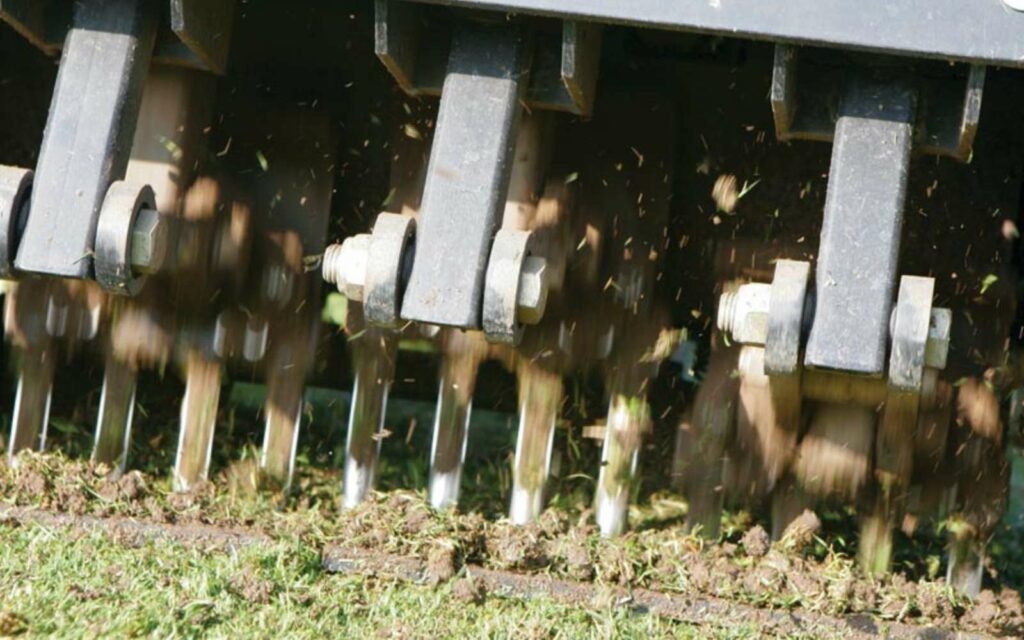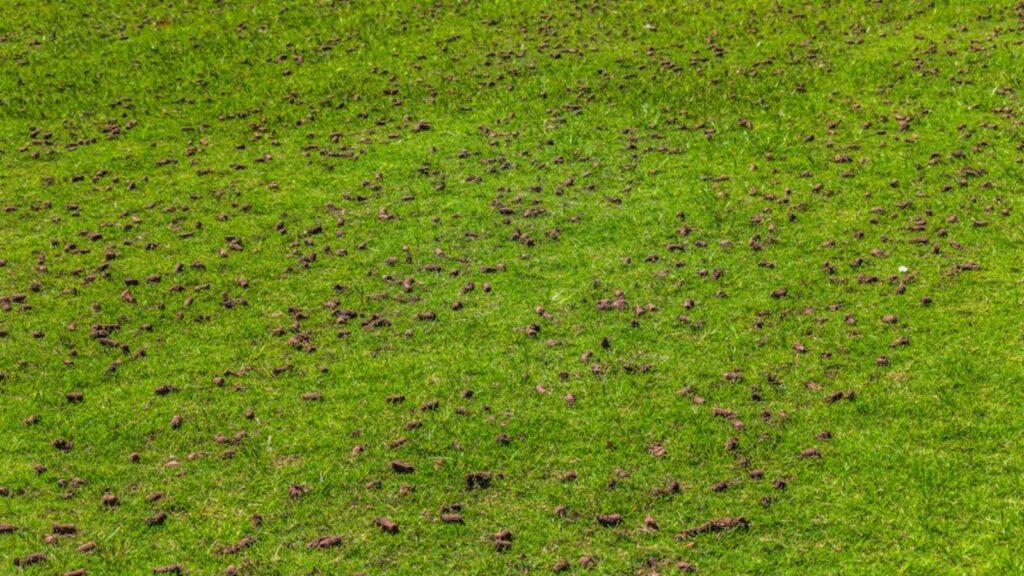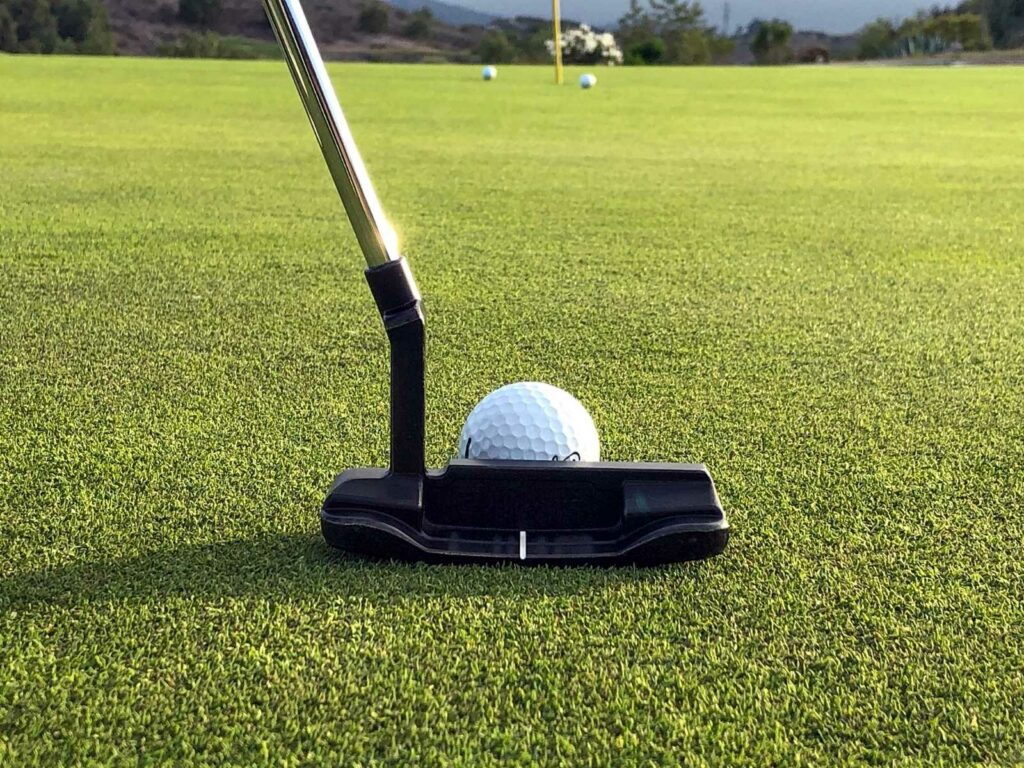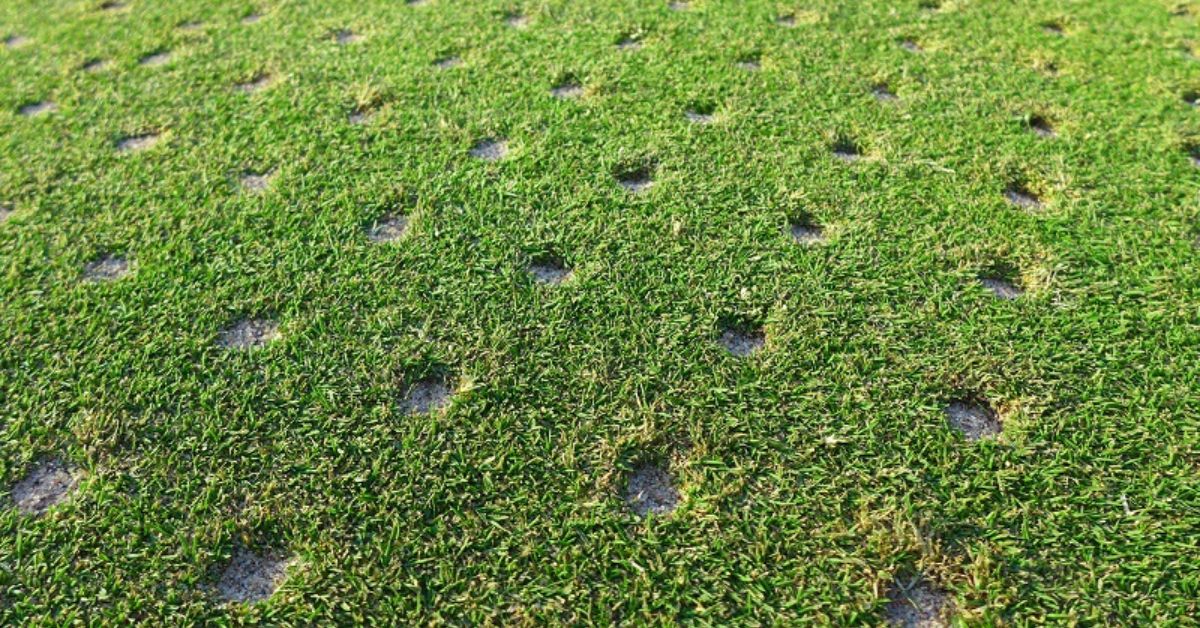Have you ever arrived at the course full of excitement and anticipation for the round ahead, only to be greeted by freshly aerated greens?
Uneven, bobbly, and unpredictable putting surfaces – as if golf wasn’t hard enough!
You’re probably wondering, how long do aerated greens take to heal?
In this article, you’ll learn everything you need to know about aerated greens: from the aeration timeline, frequency, process, and long-term health benefits for the golf course, to valuable putting tips for navigating aerated greens.
How Long Do Aerated Greens Take to Heal?
Aerated greens take anywhere from 2-6 weeks to heal, depending primarily on weather conditions. Optimal conditions for fast green recovery include rain at night and sunshine during the day. Other variables affecting the healing timeline include ground quality, hole sizes, materials and machinery used, and greenkeeper skills.
What Are Aerated Greens?
Aeration is the process of putting small holes in the green, to allow for air and water to reach the soil beneath the green.
An aerated, or punched, green can be identified by lots of tiny holes on the putting surface, contrasting with the typically smooth grass surface.

Why Do Golf Courses Aerate Greens?
Greens receive more traffic than any other playing surface on the golf course. This heavy usage can often cause them to become compacted underfoot, which impacts green performance and health.
Aeration helps relieve this compaction by allowing air to flow into the subsurface, creating a smooth putting surface by promoting healthy roots.
The process also promotes irrigation, which is the application of water to the soil.
In addition, golf courses use fertilizer to help the greens recover faster.
Do Golf Courses Aerate Fairways?
Many golf courses aerate their fairways as well as the greens, particularly in areas of high traffic by walking, golf carts, and mowers.
All these forms of traffic contribute to the compaction of the soil, which makes it much more difficult for water to infiltrate the soil and get into the root zone.
As fairways cover vastly larger areas than greens, ride-on machinery is often used for the aeration process rather than hand-operated machines.

How Do Golf Courses Aerate Greens?
Golf course maintenance teams follow a 4-step aeration process:
- Coring
- Collection
- Sanding
- Healing
The first step in the aeration process is coring, where machinery removes plugs from the ground. The plugs are around 1/2in x 2in deep and contain the complete root.
Next, metal squeegees are used to push the plugs from the surface of the green into piles. These are then collected and used to accelerate grass growth in other areas of the golf course.
Then, fine sand is applied to the green to fill the empty holes. This allows the green to be used, whilst ensuring water can still flow to the soil beneath the surface.
Finally, the grass begins the natural healing process. The video below demonstrates this four-step process in more detail:
How Often Do Golf Courses Aerate?
Aeration is usually performed in late spring and early fall, alongside other maintenance tasks such as fertilizing the fairways and tee boxes in the off-season.
Performing aeration when the grass is healthy and actively growing minimizes the risk of permanent damage and allows for a quick turnaround to optimal playing conditions.
Aeration is often avoided in the summer months. This is because heat causes further stress on the turf, particularly when it’s already in relatively poor health.
Summer is also peak golf season and courses need to be performing at their best.
How Do You Putt on Aerated Greens?
Aerated greens have an effect on both line and speed when putting, but there are two useful tips to remember to help you hole more putts.
The first thing to consider when putting on aerated greens is to roll the ball end-over-end.
Sanded greens can cause the ball to skid if your putting stroke isn’t at its best. In this scenario, it’s more important than ever to roll the ball end-over-end with consistency.
To achieve this, focus on making true contact between the putter face and the ball, rather than making a glancing blow. This prevents the ball from skidding across the sanded green surface.
Some golfers choose to aid this process by drawing a line on the golf ball. This can help to visualize the end-over-end roll as it travels toward the hole.
The second thing to think about is speed. Hit the putt a little harder than you would on a green in its normal state.
Aerated greens are slow as the holes cause extra friction on the ball as it travels along your line. By hitting the ball slightly harder, you can give the ball a better chance of reaching the hole.
Often, adding weight to the putter head will make it easier to hit a stronger putt, promoting more of a pendulum-like stroke.
It will take practice, but if you apply these tips you will be rolling putts with confidence in no time!

Conclusion
In summary, aerated greens can take between 2-6 weeks to heal depending on a number of factors.
These include weather, ground quality, hole sizes, materials and machinery used, and greenkeeper skill and experience.
While it can certainly be annoying being presented with aerated greens during your round, it’s worth remembering that it’s a necessary process that benefits the turf’s health and performance in the long run.
By practicing a firmer putting stroke on slower aerated greens, you can learn to enjoy the extra challenges it presents – even just a little!


